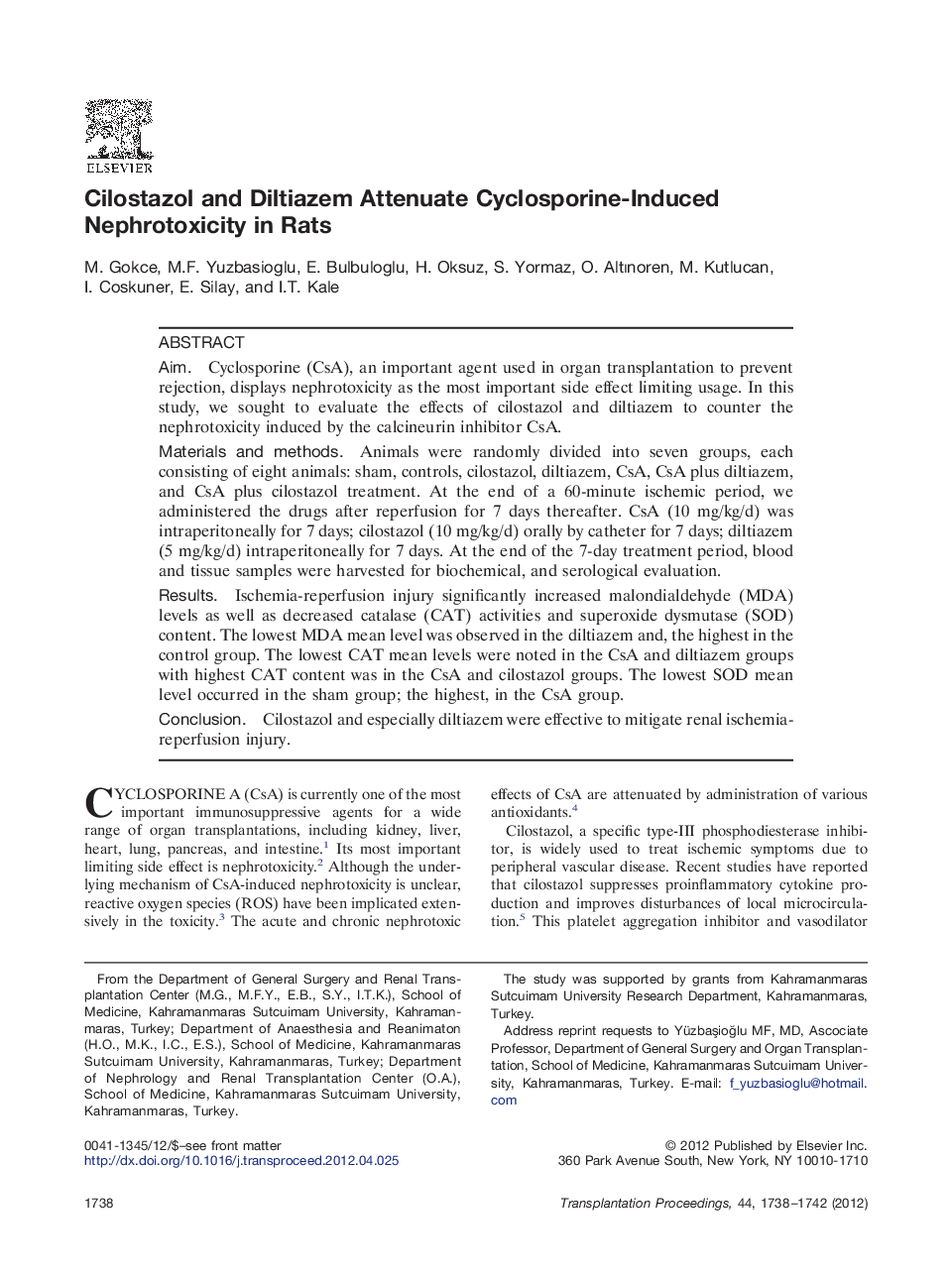| Article ID | Journal | Published Year | Pages | File Type |
|---|---|---|---|---|
| 4259952 | Transplantation Proceedings | 2012 | 5 Pages |
AimCyclosporine (CsA), an important agent used in organ transplantation to prevent rejection, displays nephrotoxicity as the most important side effect limiting usage. In this study, we sought to evaluate the effects of cilostazol and diltiazem to counter the nephrotoxicity induced by the calcineurin inhibitor CsA.Materials and methodsAnimals were randomly divided into seven groups, each consisting of eight animals: sham, controls, cilostazol, diltiazem, CsA, CsA plus diltiazem, and CsA plus cilostazol treatment. At the end of a 60-minute ischemic period, we administered the drugs after reperfusion for 7 days thereafter. CsA (10 mg/kg/d) was intraperitoneally for 7 days; cilostazol (10 mg/kg/d) orally by catheter for 7 days; diltiazem (5 mg/kg/d) intraperitoneally for 7 days. At the end of the 7-day treatment period, blood and tissue samples were harvested for biochemical, and serological evaluation.ResultsIschemia-reperfusion injury significantly increased malondialdehyde (MDA) levels as well as decreased catalase (CAT) activities and superoxide dysmutase (SOD) content. The lowest MDA mean level was observed in the diltiazem and, the highest in the control group. The lowest CAT mean levels were noted in the CsA and diltiazem groups with highest CAT content was in the CsA and cilostazol groups. The lowest SOD mean level occurred in the sham group; the highest, in the CsA group.ConclusionCilostazol and especially diltiazem were effective to mitigate renal ischemia-reperfusion injury.
